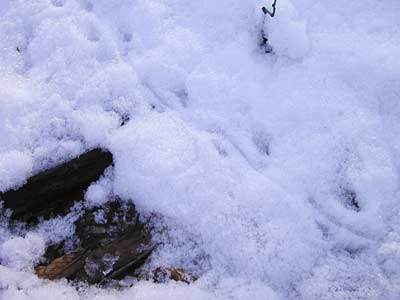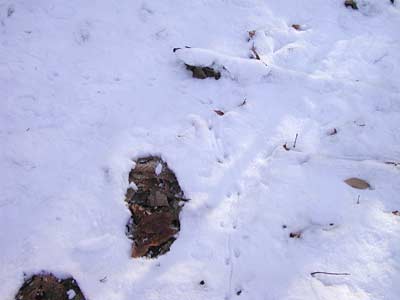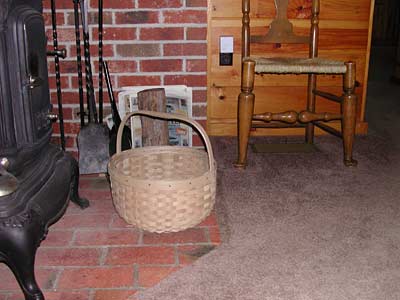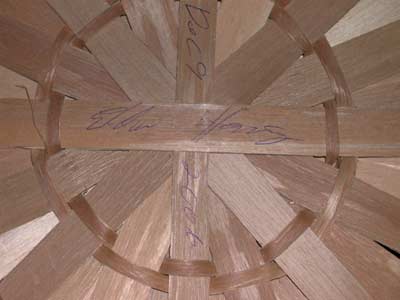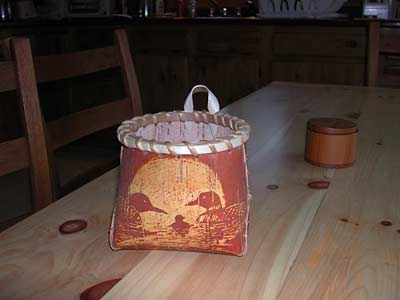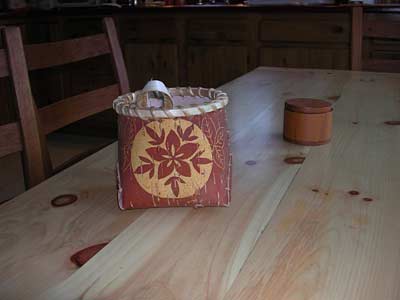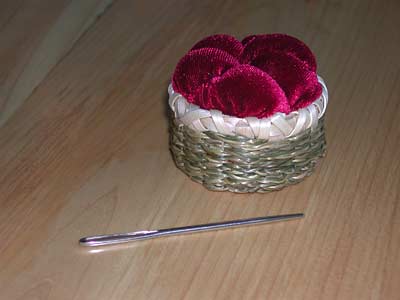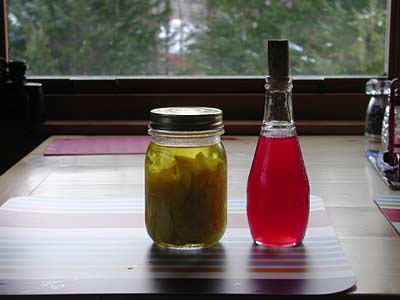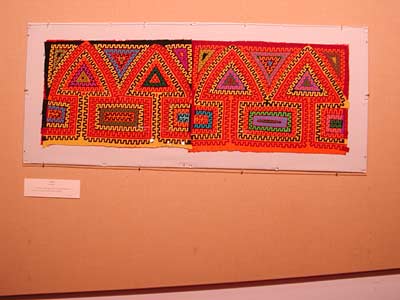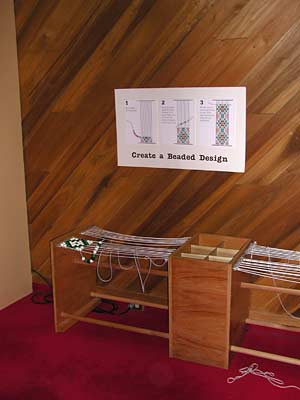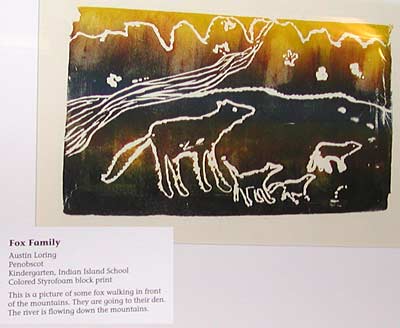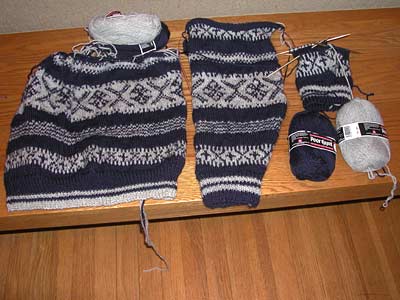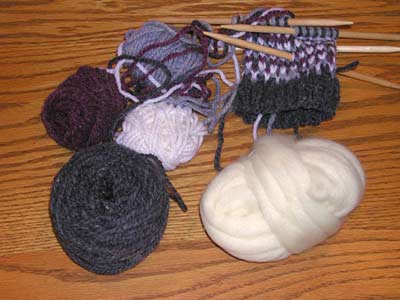What we did on the 9th was to go to the Maine Indian Basketmakers Alliance sale at U. of Maine in Orono. It’s an annual event there, the second Saturday in December. Arlene spotted an article in the Boston Globe travel section last weekend and had been looking forward to going.
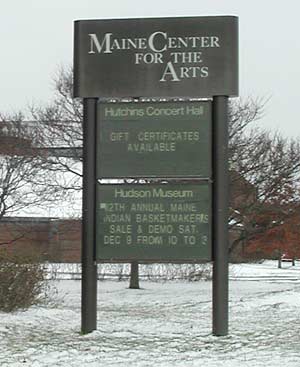
Orono is pretty far east in Maine, a couple of towns past Bangor. We’ve been through it before on our way to Atlantic Canada. Of course, once we’re sleeping in Casco we’re more than halfway there from Newton; it’s a long day trip, turned out to be 290 miles round trip from Casco, but almost all on I-95, on an only slightly familiar part of the highway.
Snow had fallen sometime in the last couple of days. The highway was clear and there was lots of snow on the trees, making it a lovely early winter drive. A lot of the route is through mixed hardwood, pine, and fir forest, a little through flat farming country. Near Waterville and Bangor there were highway exits full of the ordinary highway business sprawl. Ninety percent of the cars on the highway at the last Bangor exit got off on the road to the mall. It was clear that everyone who lived within fifty miles of there was going to the mall to do some Christmas shopping.
After one wrong fork in the road on the U. of ME campus we got to the Hudson Museum, where the basketry sale was. Sure enough, I had to stop at a crosswalk into the parking lot to let someone carrying a basket cross the street.
At the Fort Hall powwow in Idaho you can pretty much tell who is Native American and who is of European descent at a glance. At this event it was impossible to know who identifies as Native American just by looking. There have been so many generations of intermarriage in this part of the country that you just can’t tell. There were some blue-eyed blonde basketmakers at the event who consider themselves Penobscot or Passamaquoddy.
One person who would have looked Native American even in Idaho was demonstrating splitting ash to make splints for baskets. He was a short man, I mean about my height, 5’4″ or 5’6″ but probably half again my weight, with a barrel chest and muscular arms. He was working at a carving bench something like a low sawhorse with a seat on one end and a log carved out into a letter I shape going through a slot in the middle. You can clamp a long stick or board down when you push the bottom of the I away with your feet. He first used a drawknife (that’s a blade pointing towards you with a handle on each end) to trim a piece of split ash into a square stick about an inch on each side. I said, “I’m impressed that you’re working with that drawknife without a leather apron.” He said, “The secret is care and matter. I don’t care, and it don’t matter.” I think the secret is years of practice. At any rate, once the stick was square enough and had even enough grain showing he started pounding it with the back of a hatchet, holding it against an anvil consisting of a foot of railroad rail. He gave the wood a couple of good whacks, moved it an inch along the anvil, and pounded again, until he had pounded most of the length. Then he started at the end of the stick again, this time holding the other end well below the anvil so as to force the end to bend. I was amazed at how much it did bend. The wood split right along the growth rings. Each year’s worth of wood would normally make a single splint for basketry, or you could split it again lengthwise to make narrow splints. For the purpose of this demonstration he just split the stick three-quarters of the way, bent each separate piece back down in a long U shape, and ended up with a nice wooden decoration that looked like the NBC peacock’s tail.
I’ll show you what we came home with in another post. Meanwhile, check this license plate. It took me a while to track down the information about this specialty plate online, but here‘s the scoop.
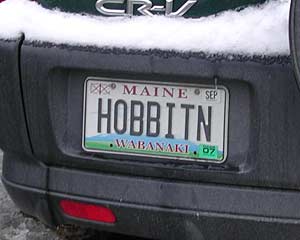
I think this driver was thinking of a word in a native language, and is a not necessarily a Tolkien fan.

